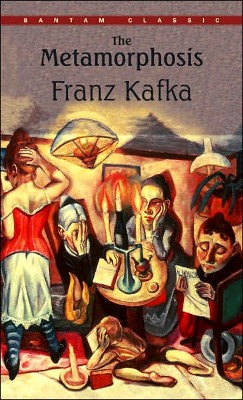[...There] is a moment which follows pride in the boundless extension of the territories we have conquered, and the melancholy and relief of knowing we shall soon give up any thought of knowing and understanding them. —Invisible Cities
In a Southern city, her contralto crumbles masses to down their catacombs—
Now a half-dozen deaf congregants; enough to rouse the boiler, near hammering
Crackling, tube-fin radiators in Sunday’s designated benches—She worked as a housekeeper
For Eunice’s piano lessons, and so overheard susurrations of visitors over dusted
In this calloused run to the rock, to the bus line, she could not surrender into ignored catacombs
Of herself; sing in the choir—Abide a yokel’s Sinnerman with cursing from his porch; then, a letter
Of public recital, with the performer’s parents at the rear entrance—What the composer felt hammering
Leipzig burgomasters, deaths of his wife, ten children—Folding a well-worn apron as a housekeeper,
Overhead, she catches the Bach signature, 14; recognizes the due diligence of Blue Back Spellers dusted
Of burnt meteorites—Roughhoused in Philadelphia, they were all rejected by the Curtis Institute, where Bach
Jobs, Nina takes the name of Simone Signoret, who escaped roundups, occupier’s orders bound for catacombs—
Of George Gershwin selling the bottoms of Charleston; some are there still, at riveting hammers
In a silent shipyard—Faster than she could write down, the blasted 16th Street Baptist Church hammered
Mullioned windows on city cornices like train platforms, a Dylan cover of Hollis Brown’s seven rounds disturbing dust
Storms gathering there—Rendition of a show tune, Mississippi Goddam in Carnegie Hall, and 54 miles from Selma—The letter,
Montgomery Situation Report, until dispersal, by court order; the President tuning in—Bach’s
Fourteen Canons, eight fundamental notes of aria as the Goldberg Variations an incident housekeeper,
Under oblivion of lilac wine, did not discard—Though the Avenue of the Arts begins at Broad, it is altogether a catacomb,
With buyers inside locust theaters, says the grandmother forecasting from bones intended for catacombs;
With vented cremains, hopes of a RAF officer’s holdings in the Atlantic hurricane belt; freed slaves hammering
Latex taps in Liberian estates; the wind blows through a heart’s vanquished arcades—The housekeeper
Found her, in London—An improbable likeness to Mary-Lou, who lifts him up; unsettled by the elevator—Dusting
Sheet envelopes sticking out the sides, on outskirts of themselves in struck brown eyes—A Bach
Fugue answered in Detroit’s epicenter of evaded pensions and divested redlined houses—Bach’s
Who saw it through, without exemption—Through sills, these pearls of rain coming from dust
Covered lands, where it never rains—This dust’s deep burial and clastic discharge for Bach’s lost
Import—Into our open letter’s falling away for music to enter each other, with mute hammers’
Unsecured catacombs of housekeeper’s exchanges, not toward a hermetic love, but realness.





3 comments:
http://www.ignant.de/?p=93248
Exercise 91.
In Hebrew, dust and ash are homophones with very different meanings.
ayin-pey-resh: dust or aphar - primordial possibility
aleph-pey-resh: ashes or efer - nothingness
https://www.google.com/books/edition/Otherlands/B-cuEAAAQBAJ?hl=en&gbpv=1&dq=Otherlands%20Halliday%20%22Alaskan%20horses%22&pg=PT15&printsec=frontcover
"The Mammoth Steppe ecosystem vanished at the end of the Pleistocene. Some experts argue that humans are responsible for the megafaunal extinctions (Alroy 2001), but across Beringia, we know that humans co-existed with the extinct species for long periods. Documented 14C dates show that humans in Alaska overlapped with horse, bison, and lions for >1,000 years and also probably with mammoths, and we lack evidence of overhunting of these animals (Mann et al. 2013). The region of Beringia is vast and the early human population was small. A more likely explanation for the extinctions is that the prolonged warming at the end of the Pleistocene caused environmental changes that did not favor the Mammoth Steppe megafauna.
When the climate warmed, it became wetter. Shrubs would have invaded the region and replaced the grasslands. Many shrubs have chemicals that protect them from herbivore browsing and they are not suitable food for grazing animals. As the glaciers melted and sea level rose, the climate would have become more maritime, with increased precipitation and cloud cover. Despite the overall warming trend, the summer growing season would have been wetter, shorter, and probably cooler due to decreased sunshine (Guthrie 2001). As these changes persisted, peat would have spread across the landscape and negatively affected megafauna. Peat is not a nutritious food and it insulates the ground promoting the spread of permafrost, creating a waterlogged, inedible substrate."
https://www.nps.gov/articles/aps-17-1-4.htm
Like the Purple Hairstreak Exercise, which is unnumbered, I am thinking about a nunatak with steppe megafauna and dayglow lichens... This is an idea in development.
I thought about the steppe horses of the Pleistocene when we were reviewing feeding regimens of the 27 horses at this stable. The stocky Haflinger ponies were for novices, and they were fed very little grain or balancer due to their evolutionary background of living on little but sparse grass in the Tyrolean Alps (Hafling). Metabolic syndromes and hoof problems arise from lush forage and overfeeding hay and sugary grain.
Post a Comment